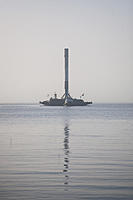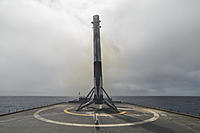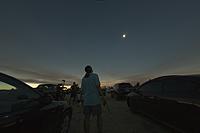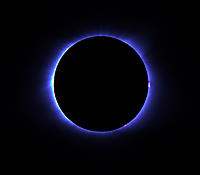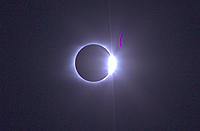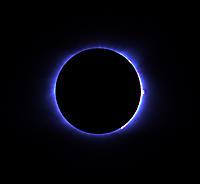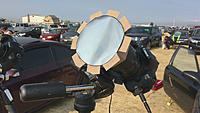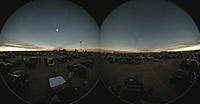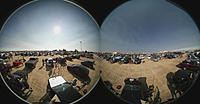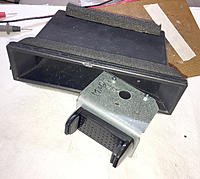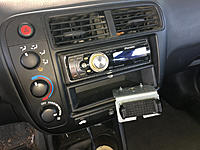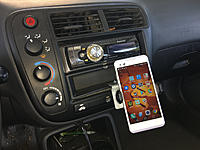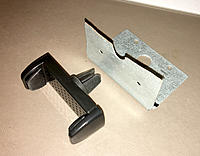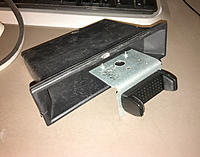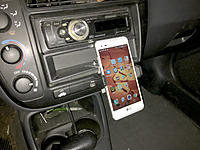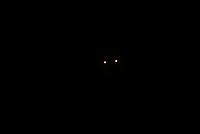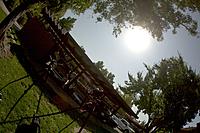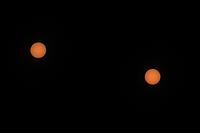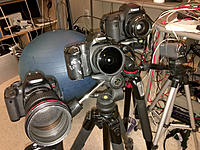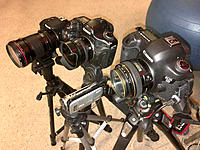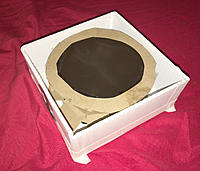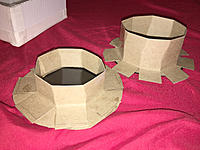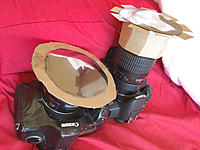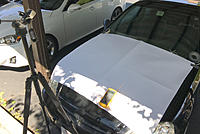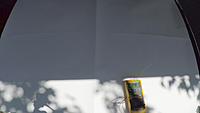Posted by Jack Crossfire |
Aug 28, 2017 @ 11:06 PM | 8,398 Views
It was almost good enough to land back on the launch mount. Suspect landing it back on some kind of mount other than the launch mount & stripping the landing gear is coming. It would only need some beefier metal bumpers. It may be the missing link to recovering the 2nd stage. The key to landing on Mars may be sending a launch mount 1st, then landing the rocket on it. It would allow a smaller rocket to send the same payload if every rocket used the same landing/launch mount at the destination.
There's serious math behind those landings. Lars Blackmore had to spend 8 years at Cambridge & MIT, another 4 years at NASA before they would hire him to design that algorithm. This evolution was basically driven by the education system. Hard to imagine working on algorithms for all those years with almost no chance of being used in a mission, again being tasked with grasshopper software with almost no chance of succeeding, then suddenly having these 16 years of unseen work become headline news around the world.
Posted by Jack Crossfire |
Aug 27, 2017 @ 06:57 PM | 10,117 Views
Posted by Jack Crossfire |
Aug 26, 2017 @ 02:16 PM | 9,589 Views
There's been a rise in concept art based on modern, constrained hardware. These barely plausible designs rooted in modern constraints are a bit more interesting than the purely fictional designs of the past. In the old days, there was no way the hardware of the time could have ever gotten us to other planets, so it lead to the rise of purely fictional Star Trek/Star Wars type artwork. There were no elements from every day life. They were completely smooth spaceships, flying saucers, levitating & powered by concept engines which didn't exist, relying on warp drives, hyper drives, & the force.
All that changed when an old fashioned chemical rocket showed modern technology could be just good enough to open the door to the stars. Now, the machines of the future are based on the machines of today.
Computer generated art:
http://deadvertex1.blogspot.com/2017...-concepts.html
Hand drawn art:
http://spacethatneverwas.tumblr.com/
Random, but had the word SpaceX on something would could pass as a methalox plant:
https://www.artstation.com/beeple
Finally, there's the legendary Robert McCall:
http://www.mccallstudios.com/
While manely fictional, there was 1 piece he did in 1996 which looked a bit like the XB-70 & Concorde designs of the old days.
http://www.mccallstudios.com/include...c-airliner.jpg
Posted by Jack Crossfire |
Aug 26, 2017 @ 12:38 AM | 8,754 Views
The last video was a 10:1 timelapse of the 360 view. The shadow movement is a bit clearer, but not fast enough to miss the details.
Overall, interest in the eclipse disappeared as fast as any other news story. There wasn't even a speech about unification of the world like there was during the moon landings. The only interest came from the same small group which reads every nasaspaceflight.com story & wants to go to Mars.
Lions read about total eclipses many times in childhood, but never thought they would see one.
Posted by Jack Crossfire |
Aug 24, 2017 @ 11:37 PM | 11,139 Views
Posted by Jack Crossfire |
Aug 24, 2017 @ 12:06 AM | 10,242 Views
Based on the camera's orientation, this is how it was oriented. Strangely remember it rotated 90 deg clockwise & the 2 large prominences going down & right, but it may have been an optical illusion from the sun being on the car's right side. Used a single exposure to bring out the flares.
Also in this issue, we see just how good the Sanyo's footage was. It might be the most exciting footage of all the cameras, clearly showing the shadow traveling from Mount Jefferson to the crowd.
Posted by Jack Crossfire |
Aug 23, 2017 @ 12:35 AM | 9,380 Views
After finding nothing which captured the size lions actually saw, the lion kingdom decided to stack all 62 photos the T4I got & rotate it with the horizon down. It was configured to make a movie rather than a still photo, so it got only a tiny amount of light. In reality, the prominences stretched many diameters & were fuller. At least this starts to show the X with 2 large arms on the left & 2 smaller ones on the right. Unsharp masking gives mixed results.
Posted by Jack Crossfire |
Aug 22, 2017 @ 08:48 PM | 9,743 Views
5971420 eclipse_5d
6503204 eclipse_android
10632900 eclipse_gear360
11955400 eclipse_gopro
26555836 eclipse_mark3
3536040 eclipse_sanyo
38355472 eclipse_t4i
103510272 total
It was 1 of the things you thought would never happen in your lifetime. 103 GB of data was captured in 3 hours by 7 cameras. The T4I shot a CU timelapse at 1/200, F5.6 ISO200, 200mm The T4I got 62 frames of totality, manely limited by the slow SD card.
The hour before totality was very busy. The amount of checklist rechecking, camera blocking, camera reconfiguring, reframing of the drift shots was intense. 10 minutes before totality was a race to start all the cameras. The Mark III went into an excessively fast shutter bracket. It required a faster shutter speed to focus, but this wasn't reset to the slower shutter speed needed for exposing the stars. Magic Lantern wouldn't stop shooting, but fortunately there was enough time between shots to adjust the shutter without stopping it.
As the 3 DSLR's clicked furiously, the lion now turned to using his own eyes. The lion just stood & stared at the sun through the glasses. The sliver of light quickly got smaller & smaller. After the episode with Magic Lantern, it all happened extremely fast. There was no time to gather someone to hug or tweek any cameras, now.
Then the mass shouting began, including "glasses off!" After a careful move to pull the filters off the cameras without shifting focus, it was time to stare &
...Continue Reading
Posted by Jack Crossfire |
Aug 18, 2017 @ 08:32 PM | 5,935 Views
This arrangement can slide into the defroster button when the screws get loose, but should be good enough for 2 drives. The long term requires removing more material & shifting the phone right.
Posted by Jack Crossfire |
Aug 17, 2017 @ 11:52 PM | 5,742 Views
Those vent mounts are $1 at the dollar store.
A simulation of the corona was released
http://www.businessinsider.com/solar...natural-blue-4

showing a very unique pattern, distinct from all the past coronas. It made the lion kingdom wonder if it was worth F5.6 instead of F2.8, but F2.8 is very sharp on the wide lens. The corona will be captured by many men & the lion kingdom does mean men. So it won't be worth sacrificing the timelapse to try to get it on the CU lens. It would have been nice to have a 9th camera for making a bracketed CU, anyways.
As we approach zero hour, the mane reason for preparing 8 cameras & having 4 pointing at the sun was to increase the chance of at least 1 getting a minimal shot. The absolute worst thing that could happen is all the cameras failing & your only memory being what you saw with your own eyes. Some of them are definitely expected to get nothing.
Posted by Jack Crossfire |
Aug 16, 2017 @ 01:50 PM | 5,258 Views
15 minutes is the maximum without reframing.
Posted by Jack Crossfire |
Aug 15, 2017 @ 10:24 PM | 7,192 Views
In other news, the trick with the 5D Mark III was to set the intervalometer to start when exiting the menu. Starting on the shutter actions didn't work, but exiting the menu did. The only way to stop it is to power it off & remove the battery when the writing stops. Then power it on & dig through the menus to disable it before it starts shooting again. There is no way to see the viewfinder before starting the intervalometer. You have to start live view & finish composing before digging through the menus to start it.
The only bracketing available is the 7 step factory mode. It must be set to single shot mode to use the intervalometer. The intervalometer properly steps through each exposure.
None of the cameras can be aimed when they're shooting at full speed. Need to measure the amount of time it takes the sun to cross the frame on the wide & narrow lenses. Would be happy just to get a piece of Leo & the sun in frame.
Had just enough visible stars to get in a 5 frame stack at 1 second, ISO 400, F2.8. This is 4x more light than the highest exposure on mreclipse.com. The bracketing will go from this to 4 stops below his highest exposure. His highest exposure still wasn't a total whiteout.
The totality CU was originally written as 1/100, but changed it to 1/200 for the slight chance of getting a prominence. The 2 wide DSLR's are covering the same bracketing range.
Posted by Jack Crossfire |
Aug 14, 2017 @ 10:21 PM | 5,584 Views
Got the day job camera. They're pretty obsessed with guarding it, despite not using it for 2 years. It has serious limitations in exposure bracketing & magic lantern doesn't work at all. Going to have to manually fire it. Advanced bracketing only works intermittently. Intervalometer fires without waiting for the bracketing sequence to end, thereby causing it to shoot random exposures at the starting setting. It works perfectly on the 5D Mark I. Have 2 more cameras & tripods currently in use. Everything which can go wrong is going wrong, from the nails in the tires to the camera issues. It's much like rehearsing for a concert.
Posted by Jack Crossfire |
Aug 13, 2017 @ 08:40 PM | 5,812 Views
The 'pro got extremely hot when recording 1080p 120fps. An attempt was made to cool it from behind, but the heat manely comes out of the user interface panel. This clocked in at 40C, slightly below the Samsung. Fortunately, the sun will be manely obscured when it's running.
Having spent a day building a filter box because the filters were made of cardboard, the decision was made to wrap the Samsung in a towel for transport. Its original packaging didn't survive the lion encounter.
Testing magic lantern revealed its 10 step bracketing + full speed intervalometer are key players. The intervalometer fires the complete bracket sequence over & over. Can't think of any Japanese camera with this functionalty to this day, but no-one is still using it. The trick is the trash button starts & stops the intervalometer. The 5D support is limited to only 9 steps & it always says 2 second delay is enabled, but 9 steps might be just enough & it doesn't seem to invoke the 2 second delay.
Auto exposure bracketing won't work because it can end up pushing the longest exposures to over 5 seconds. It could end up with only 1 pass. The range has converged on F5.6 ISO 200 1/100 to 2.5s in 1 stop increments for the 5D or 1/100 to 5s for the Mark III, but it's all based on mreclipse.com.
The selfie shots have emerged as the most important. With any luck, the 5D will get 5 passes through the 9 stops, manely limited by CF card speed. The iPhone will get 4k video from below & the Samsung will get video from above. The lack of space means all the shots will be behind the lion. The cameras all have to be facing away from the car & the Samsung is stuck to the car.
Posted by Jack Crossfire |
Aug 13, 2017 @ 03:21 PM | 5,885 Views
A new filter & case for the 2 filters was fabricated. In the unlikely event another camera materialized, its filter would be just for focusing. It was a bit sturdier than the 1st filter. In old age, it 's disappointing how the obvious way something should be designed is now completely foreign in the 1st iteration.
Posted by Jack Crossfire |
Aug 13, 2017 @ 12:41 AM | 5,834 Views
Posted by Jack Crossfire |
Aug 13, 2017 @ 12:35 AM | 5,752 Views
Posted by Jack Crossfire |
Aug 13, 2017 @ 12:33 AM | 5,636 Views
Posted by Jack Crossfire |
Aug 12, 2017 @ 05:22 PM | 4,868 Views
Shadow setup tested. After seeing Japan's world record video failure from 2015, it was decided to max out the framerate rather than the resolution. Even 60fps struggled to capture the motion. This is 1 shot everyone is struggling with. The gopro does 120fps 1080 & the iphone is too narrow.
Also tested magic lantern's advanced bracketing feature. That will do the job for the Leo closeup. Just set it to 1/200 to 5s, F 2.8, ISO 400, 1EV steps. 1 shutter press engages the full sequence. Using higher sensitivity to get more shots in less time.
Posted by Jack Crossfire |
Aug 12, 2017 @ 02:06 AM | 5,112 Views
With parking selling out just days after the lion kingdom reserved a space, it was clearly going to be good weather. The decision was made to use 5 cameras & try to get a 6th camera from the day job.
gear 360: 4k video from pole
Canon T4I: hail mary timelapse from 9am to 12pm
gopro: shadow bands & temperature
Canon 5D: selfie of lion looking at eclipse from behind
Sanyo: Mount jefferson closeup
Canon 5D mark II: hail mary wide shot with leo
The mane problem with the cameras is setting exposures.
Tests showed the darkest settings which can capture leo are 4s, ISO 400, F2.8. Only Casseopia is visible at 1s, ISO 400, F2.8. This would probably blow out the entire sky. Instead of leo, the lion kingdom will have to settle for Mars & Mercury, the only objects likely to be bright enough to see in 1s ISO 200 F5.6. Tests showed the 28mm gives 37 deg in stellarium, just enough to fit Leo in.
The fisheye will be used for the selfie. The selfie is definitely more important than the Leo shot. Reviving the Sanyo proved difficult. It has some trouble powering up, but was tested to record 45 minutes per battery. It's hard to believe the Sanyo was the mane HD camera for 3 years.
No-one ever talks about their exposure settings for eclipses. The best data is on mreclipse.com, which recommends 1s ISO 200 F5.6 for the absolute brightest. The original idea was to make everything as automatic as possible, but the evidence is the current generation isn't going to get much at all. They're having a real hard time devising shots & using their cameras. What's on the internet is very low resolution.
Pretty much everything is automatic except the star field shot. All the shots are considered hail marys.
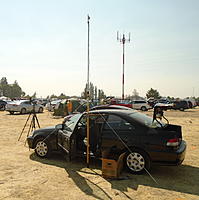 Views: 143
Views: 143 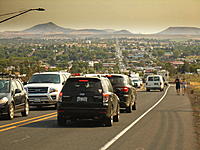 Views: 143
Views: 143 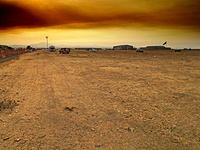 Views: 163
Views: 163 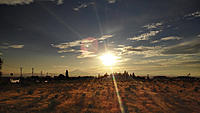 Views: 144
Views: 144  Views: 144
Views: 144 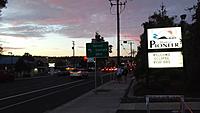 Views: 152
Views: 152 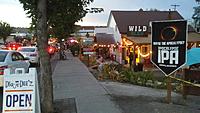 Views: 157
Views: 157 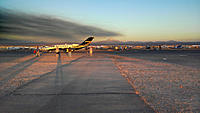 Views: 173
Views: 173 